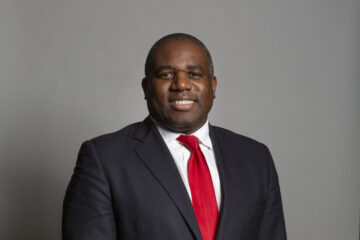Talks between former prime minister Benjamin Netanyahu and smaller right-wing and far-right parties have begun following last week’s Israeli election, which saw Netanyahu emerge as the likeliest next premier.
What happened
- With all the votes counted and Knesset seats apportioned by Thursday evening last week, the relative success of the right – represented by Netanyahu’s Likud, Haredi Shas and United Torah Judaism, and especially the far-right Religious Zionist Party – became clear, having gained 12 seats between them.
- Though incumbent prime minister Yair Lapid, leader of the centre-left Yesh Atid, gained 7 seats in the Knesset, his centrist and left-wing coalition partners – Benny Gantz’s centrist National Unity, and left-wing Merav Michaeli’s Labor and Zehava Gal-On’s Meretz – saw their representation decline, or in Meretz’s case, disappear from the Knesset altogether.
- The right-religious bloc, led by Netanyahu, now has a decisive 8-seat majority in the Knesset, with 64 of 120 seats.
- Final vote tallies showed just over 30,000 votes between the two camps, though nearly 290,000 votes cast for left-wing Meretz and Arab-majority Balad went to waste as neither party crossed the 3.25 percent threshold required to enter the Knesset.
- As Jeremy Sharon summarised for the Times of Israel: “Had Meretz run on a joint list with Labor, as it sought to do and as outgoing Prime Minister Yair Lapid urged, and had Balad not opted to break away from Hadash-Ta’al and run alone, it is likely that the division of seats in the new Knesset would have denied the Netanyahu bloc the outright majority it has now won.”
A recap
The 1 November election was in June this year, when the ‘change’ coalition of anti-Netanyahu parties collapsed following a series of legislative defeats and defections from its left- and rightmost wing. Since April, the coalition had been governing without an outright majority in the 120-member Knesset, when Yamina MK Idit Silman quit the government to join the opposition. Simultaneously, in line with the 2021 rotation agreement that founded the Bennett-Lapid ‘change’ government, sitting foreign minister Yair Lapid, leader of the centrist Yesh Atid party, became prime minister.
Technical difficulties
The election, Israel’s fifth since 2019, culminated in the most conclusive election result since 2015, with a clear majority for the right-religious bloc in the Knesset. However, the election did not see the swing from left to right suggested by the change in parliamentary seats. Instead, the centre-left Lapid coalition suffered from two technical setbacks: turnout and the electoral threshold.
- As has often been the case in Israeli elections, turnout played a significant role in determining the final results. Overall turnout increased from 67 percent in March 2021 to 71 percent this October.
- However, turnout in centre- and left-leaning cities in central Israel like Tel Aviv, Herzliya and Kfar Saba saw no increase in turnout compared with last year.
- By contrast, right-leaning cities like Jerusalem and the southern cities of Beersheba, Ashkelon and Ashdod, saw turnout increase by between three and seven percent – driving the national increase in turnout.
- Last year’s election saw roughly 2.2 million Israelis vote for anti-Netanyahu parties, compared with 2.1 million voting for the pro-Netanyahu bloc. By contrast, this election saw 2.36 million support Netanyahu’s coalition while his opponents won 2.33 million votes.
- As such, Netanyahu’s bloc very narrowly “won” the “popular vote” – to the extent that this concept can be applied to Israel’s electoral system – for the first time since April 2019.
- The right-religious bloc’s relatively big Knesset majority is likewise explained by the technical workings of Israel’s electoral system.
- All four parties in Netanyahu’s bloc – some of which represent coalitions of much smaller parties brokered by Netanyahu ahead of the election – easily surpassed the 3.25 percent threshold required to enter the Knesset, meaning that only around 56,000 pro-Netanyahu votes ultimately went to waste.
- By contrast, as many as four parties in the anti-Netanyahu bloc spent the campaign hovering around the 3.25 threshold, which ultimately saw Meretz and Balad lose representation altogether – denying Lapid some 4-8 seats.
Out of options?
As preliminary coalition talks have gotten underway, speculation has started about the nature of the incoming Netanyahu government, particularly in light of the potential inclusion of far-right parties in the coalition.
In his fifteen years in office between 1996-1999 and 2009-2021, Netanyahu generally preferred to have parties both to his right and left in governing coalitions, including now-opponents including Lapid, Gantz and Tzipi Livni. However, the election results would suggest his most obvious coalition would be to partner with parties to his right, whether Haredi or nationalist-religious. Such a coalition would alienate much of Israeli society on the centre and left, which voted for parties that would almost certainly refuse to join a Netanyahu-led government that also included the far-right. Having legitimised the far-right, it will fall to Netanyahu to moderate the radical demands of his likely coalition partners: who have previously called for the expulsion of “disloyal Arabs”, Jewish prayer on the Temple Mount, and a pushback against LGBT+ rights. In the absence of any other coalition partners, this may prove a difficult task.
What happens next
Next week, President Isaac Herzog will meet with representatives of all parties elected to the Knesset and then confer the mandate to form a government upon the candidate with the most endorsements – almost certain to be Netanyahu. Some reports have suggested that Herzog, Israel’s largely ceremonial president and former leader of the Labor party, has encouraged both Lapid and Gantz to work with Netanyahu, as well as appealing to the returning prime minister to welcome them into coalition if possible. The make up of that government remains to be seen, though the former prime minister has few options – due to his own decisions.


